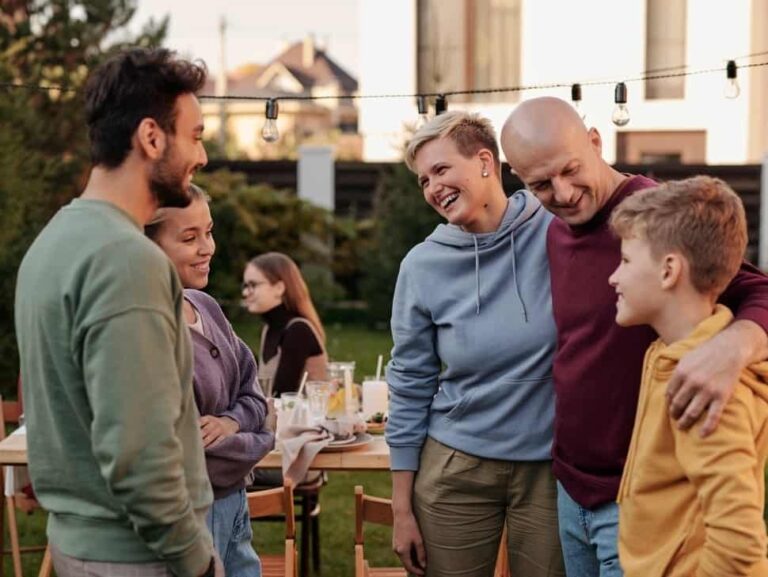Moving to a new neighborhood is kinda like dating someone new. You get all excited about the curb appeal and those fancy granite countertops, but then you realize you’ve gotta live with this decision for years.
I’ve moved around more times than I care to admit.
My last house hunt took us through 17 different neighborhoods before we found “the one.”
Finding the right neighborhood isn’t just about pretty houses. It’s about finding a place where your whole family can thrive.
Some neighborhoods look amazing on paper but feel all wrong when you’re actually there.
Others might seem a little rough around the edges but end up being the perfect fit for your family’s needs.
Let’s chat about what really matters when you’re picking a neighborhood that’ll make you happy long after the moving boxes are empty.
What are the qualities of a good neighborhood?
So what makes a neighborhood “good” anyway?
I used to think it was all about the fancy houses and perfectly manicured lawns.
Boy, was I wrong.
A truly good neighborhood fits YOUR specific family needs like a glove.
For parents with young kids, it might mean sidewalks, parks within walking distance, and lots of other families nearby.
For someone who works from home, it could mean peace and quiet during the day and maybe some coffee shops for when you need to escape your home office.
If you have teenagers, you might want a place with safe hangout spots and good public transportation so they can have some independence.
The “perfect” neighborhood is totally different for everyone.
What works for your coworker or your sister might be completely wrong for you.
I remember when my friend Lisa moved to this super trendy area with amazing restaurants, but she was miserable because her commute suddenly became an hour longer each way.
A good neighborhood isn’t just about checking boxes on a list. It’s about how it makes you feel when you’re there.
Do you see yourself living there for years? Can you picture your kids growing up there? Will your lifestyle fit in?
Those gut feelings matter way more than you might think.
Factors to Consider When Choosing the Right Neighborhood
Finding your ideal neighborhood is like putting together a puzzle where some pieces matter way more than others.
You probably can’t find a place that’s perfect in every single way (unless you’ve got unlimited cash, and even then, good luck).
It’s about figuring out what your family absolutely needs versus what would just be nice to have.
We’re gonna break down all the big factors to think about, but remember – you get to decide which ones are dealbreakers for your family.
Understand Crime and Security
Safety first, right? I mean, who cares about a gorgeous kitchen if you don’t feel safe walking to your car?
When we were house hunting, I got obsessed with those crime map websites.
For instance, many families ask: Is North Austin safe? Exploring questions like this can give you peace of mind as you look for a place that feels right.
They’re super helpful but don’t tell the whole story.
Talk to local police departments about the specific areas you’re considering. They know way more than any website.
Look for neighborhoods where people are out and about. Neighbors walking dogs, kids playing outside, people chatting on porches – these are all good signs.
Empty streets where everyone stays locked inside? Not so much.
I always check if houses have crazy security measures like bars on windows or tons of security signs. That usually tells you something.
But don’t just judge by appearances. Some of the prettiest neighborhoods have surprising crime stats, while some less polished areas are incredibly safe.
Chat with potential neighbors if you can. They’ll give you the real scoop that no website will tell you.
Quality of Local Schools
Even if you don’t have kids, good schools matter for your home value. Weird but true.
I always check school ratings online, but those numbers don’t tell you everything.
Visit the actual schools if you can. See how the teachers interact with students. Check out the facilities. Are they well-maintained?
Ask about special programs – arts, sports, special education services, gifted programs. Whatever might matter to your family.
Talk to parents at local parks or grocery stores about their experiences with the schools. They’ll tell you way more than any official tour.
Some neighborhoods have great elementary schools but iffy middle schools. Think about the long game if you’re planning to stay a while.
Private school is always an option, but those tuition bills add up fast. Make sure you’re budgeting for that if public schools aren’t your thing.
Remember that school boundaries can change! Double-check with the district that your potential house will definitely feed into the schools you’re researching.
Proximity to Work and Commute Times
Let’s be real about commutes. They can make or break your daily happiness.
I once took a job that was “only” 15 miles from home. Turns out that was an hour and fifteen minutes in rush hour traffic each way.
Two and a half hours of my day. Gone. Just sitting in my car, getting cranky.
Don’t just map the distance – actually drive your potential commute during real rush hour. Then imagine doing that every single day.
Think about backup routes too. What happens if there’s an accident on your main route?
If you use public transportation, test that exact route at the times you’d be using it. Is it reliable? Crowded? Safe?
Working from home some days? Make sure the neighborhood has reliable internet service. Not all areas are created equal when it comes to connectivity.
Consider how close you need to be to the airport if you travel for work. Those early morning flights get a lot earlier when you live far away.
Remember that commute preferences can change over time. That 45-minute drive might seem doable now, but how will you feel about it in five years?
Amenities and Infrastructure
Grocery stores, right? You need ’em. And not having one nearby is a pain in the butt.
When we moved to our current place, I didn’t realize the closest decent grocery store was 20 minutes away. Now I spend way too much time in the car just getting basic stuff.
Make a list of the places you go to weekly. Grocery stores, pharmacies, your favorite take-out spots, whatever. Then see how far they’d be from your potential new home.
Parks and green spaces are huge, especially if you have kids or pets. Drive around and see if people actually use them.
Check out the local shopping options. Will you have to drive to a different town for everything beyond the basics?
Healthcare matters too. How far is the nearest hospital? Are there good doctors and dentists nearby who are accepting new patients?
Look at cell service while you’re visiting. Bad reception is super annoying in daily life.
And what about power outages? Some neighborhoods lose power way more often than others. Ask the locals about this.
Community and Lifestyle Compatibility
You’re not just buying a house. You’re joining a community.
Drive around at different times. Weekday mornings, weekend afternoons, Friday nights. You’ll get a totally different vibe each time.
Are there kids playing outside? Dogs being walked? People gardening? Or is it a ghost town where everyone stays inside?
Look for community bulletin boards at local coffee shops or libraries. They can tell you a lot about what kind of activities happen in the area.
Check out local Facebook groups for the neighborhoods you’re considering. They’ll show you what people care about and complain about.
Notice the bumper stickers, yard signs, and flags. They can give you hints about the political and social vibe of an area.
If you have specific hobbies or interests, see if there are clubs or regular meetups nearby. Having your people close makes a huge difference.
Religious? Check out local worship options if that’s important to your family.
Some neighborhoods have block parties, progressive dinners, or holiday traditions. Others are more private where people keep to themselves. Neither is wrong, but know which one matches your preference.
Real Estate Value and Future Growth
Nobody wants to buy in a neighborhood that’s on its way down in value.
Look for signs of investment in the area. New businesses opening, homes being renovated, infrastructure improvements.
Check out what’s happened to home values over the past 5-10 years. Have they gone up steadily or bounced all over the place?
Talk to a local real estate agent about future development plans. New schools, shopping centers, or parks can boost values.
But watch out for potential negatives too. Is there a chance that beautiful empty land nearby could become a highway or shopping center?
Drive a few blocks in every direction from your potential house. Neighborhoods can change dramatically just a street or two over.
Look at rental percentages in the neighborhood. A good mix of owners and renters is fine, but too many rentals can sometimes impact property values and community feel.
Check if there are a bunch of houses for sale all at once. It could be random timing, or it could mean people are trying to get out for some reason.
Accessibility and Walkability
Can you walk to anything useful from this neighborhood? Or do you need to hop in the car for absolutely everything?
I lived in a “walkable” neighborhood once where the sidewalks mysteriously disappeared halfway to any destination. Super annoying.
If you have kids, can they safely walk or bike to school or friends’ houses? Freedom for them means freedom for you too.
Are there sidewalks at all? Street lights? Bike lanes? These details matter way more in daily life than you might think.
Check public transportation options if that matters to your family. Not just if it exists, but if it runs frequently enough to be useful.
Consider how easy it is to get to major highways or thoroughfares. Some peaceful-seeming neighborhoods require a 15-minute drive through local roads just to get anywhere.
And think about winter if you live somewhere with snow. Those charming steep hills become terrifying ice slides in January.
Visit the Neighborhood
You absolutely need to visit at different times of day and different days of the week.
That quiet street might turn into party central on weekends. Or that bustling area might feel eerily abandoned after dark.
Talk to actual humans who live there. Most people are happy to chat about their neighborhood if you’re friendly about it.
Visit local businesses and strike up conversations. The coffee shop barista probably knows all the neighborhood dirt.
Sit in your car and watch the flow of daily life for a while. Creepy? Maybe a little. Informative? Definitely.
Check for noise at different times. That peaceful afternoon might not prepare you for the 2am bar crowd or 5am garbage trucks.
Look for the little details. Are trash cans left out for days? Lawns maintained? These can tell you about how people care for the community.
Notice how you feel when you’re there. Sometimes your gut knows before your brain does if a place is right for your family.
Noise, Pollution, and Environment
Some neighborhoods look perfect until you realize they’re in a flight path or next to train tracks.
I once found a gorgeous house only to discover the nearby factory let out a smell like dirty gym socks every afternoon around 4pm. Hard pass.
Visit on garbage day. Seriously. You’ll see if trash pickup is reliable and if the neighborhood looks gross on collection day.
Check for heavy traffic at different times. A quiet side street can become a major cut-through during rush hour.
Look for potential environmental issues like flooding. Chat with neighbors about whether their basements stay dry during heavy rains.
Consider seasonal changes too. Those beautiful trees drop leaves that someone has to rake. That sunny yard might be a mud pit in rainy months.
And think about allergens if anyone in your family has sensitivities. Some neighborhoods have way more of certain plants than others.
Define your lifestyle needs
This is where you get real honest with yourself about how you actually live, not how you wish you lived.
If you haven’t cooked a meal in five years, having restaurants nearby might matter more than that gourmet kitchen.
Got three dogs? That tiny yard might be a dealbreaker no matter how perfect everything else is.
Love hosting big gatherings? A neighborhood with strict noise rules might drive you nuts.
Work from home? That cool urban loft might feel claustrophobic after a few months of never leaving.
Think about your daily routines and what would make them easier or harder in each neighborhood you consider.
And don’t forget about your five-year plan. That studio apartment district full of singles might feel less awesome when you have a baby on the way.
Conclusion
Finding the right neighborhood takes some serious legwork, but it’s so worth it.
Your neighborhood shapes your daily life in ways you might not even realize until you’re living there.
Trust your gut feeling when you visit different areas. Sometimes you just know when a place feels right for your family.
Don’t rush the process if you can help it. This is a huge decision that affects everything from your commute to your kids’ friends to your daily happiness.
Take notes when you visit different neighborhoods so they don’t all blur together after a while.
And remember – no neighborhood is 100% perfect. It’s about finding the place where the good stuff outweighs the not-so-good for YOUR specific family.



